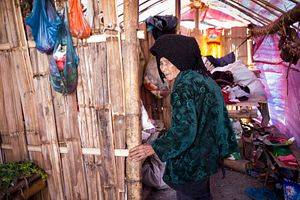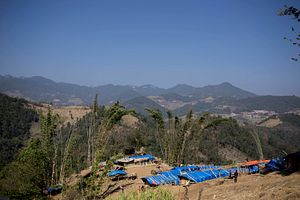When rebel group Myanmar National Democratic Alliance Army launched attacks against the Myanmar military in Kokang Self-Administered Zone on February 2015, heavy fighting continued for months. According to the UN the conflict drove about 70,000 people across the border into China.
One year after the conflict and 27,000 refugees still remain in China, according to the Myanmar National Democratic Alliance Army, the major donor of a Kokang Refugee Assistance Program. The number cannot be confirmed by major international humanitarian groups, due to the difficulty accessing the border areas of China.
Refugees long for the day they can finally return home and rebuild their homes. But worried about land mines, or of being arrested by the Myanmar military as spies for the rebel groups, many choose to stay.
The Chinese media seldom reports on the refugees, and so their continued presence in China is still largely unknown. In fact, officially they are not refugees but migrants. The main Kokang online forum that provides news about the refugees is blocked in Myanmar.
It’s been more than a year since the conflict. Without the aid of international humanitarian groups, the camps are facing food shortages, a lack of education opportunities, and once the sugar cane harvest is finished, the chance to earn even a modest income.
Ann Wang is a photojournalist based in Myanmar.










































